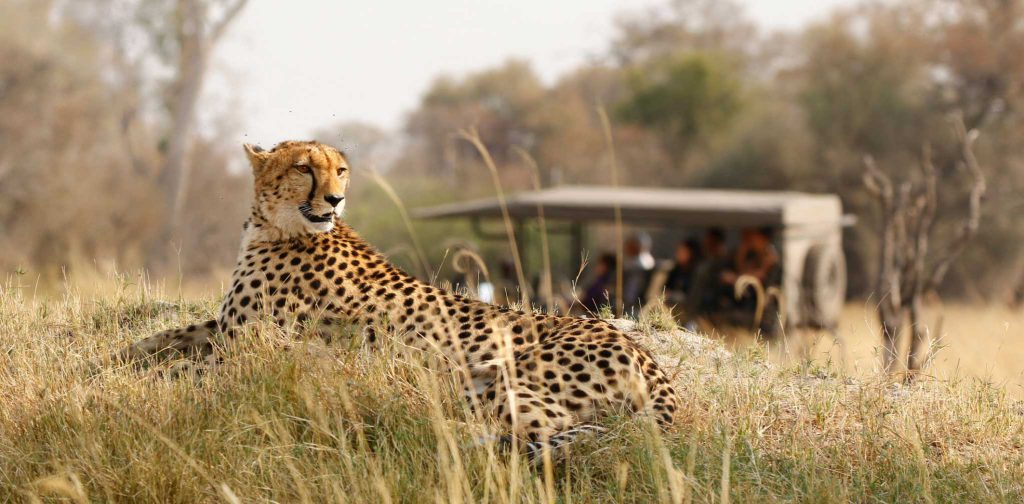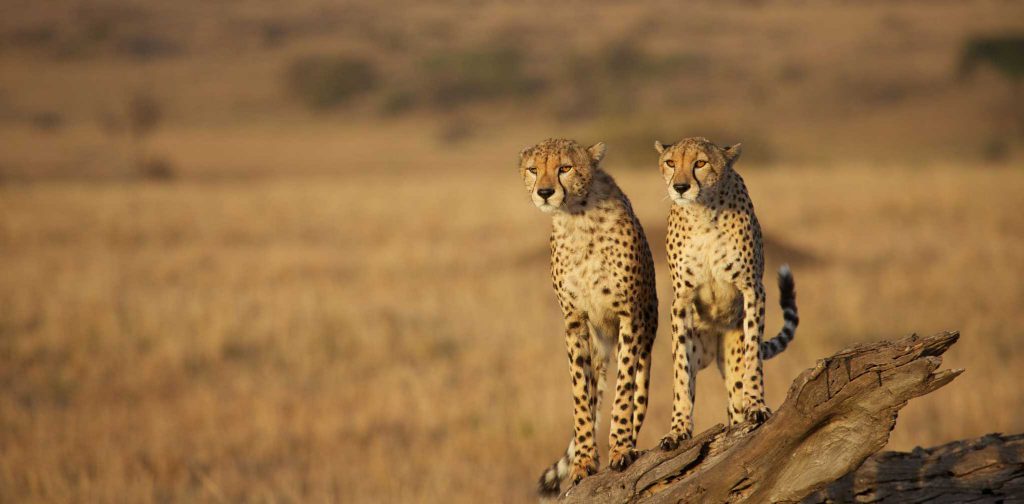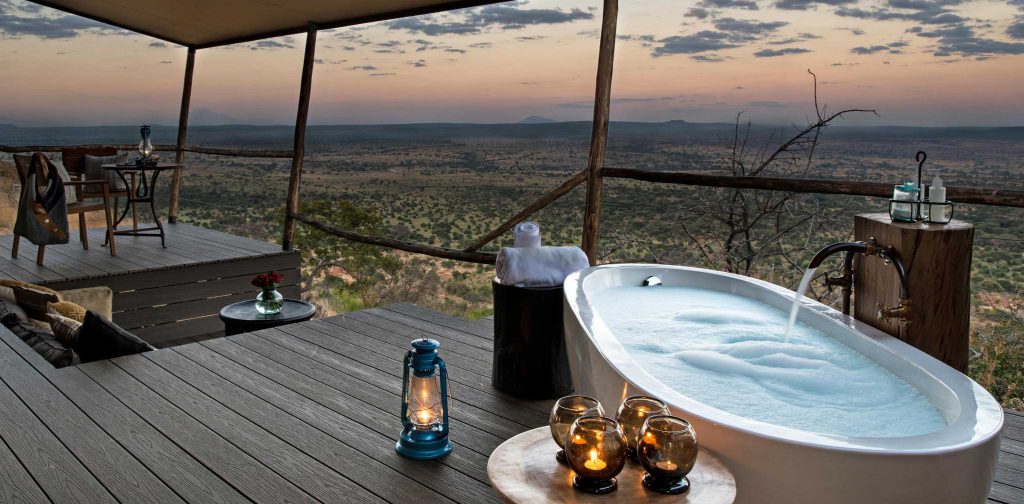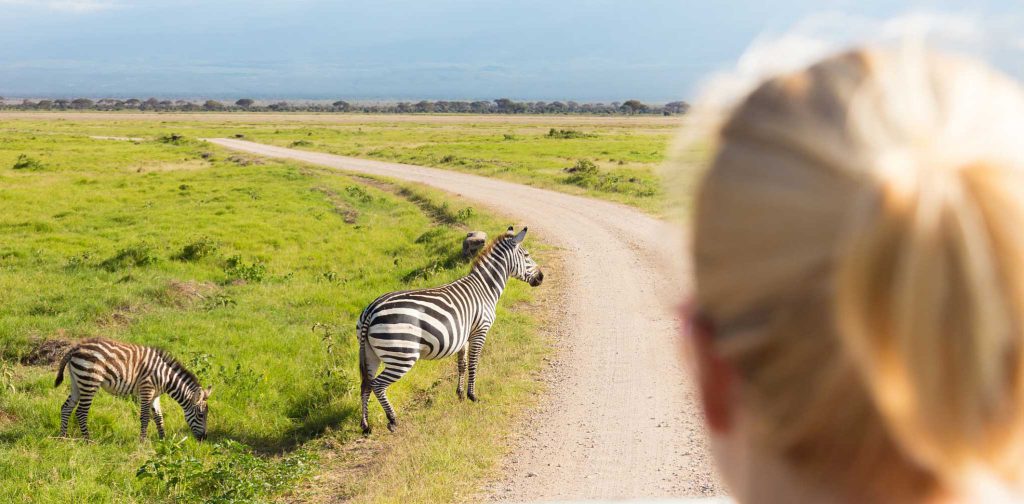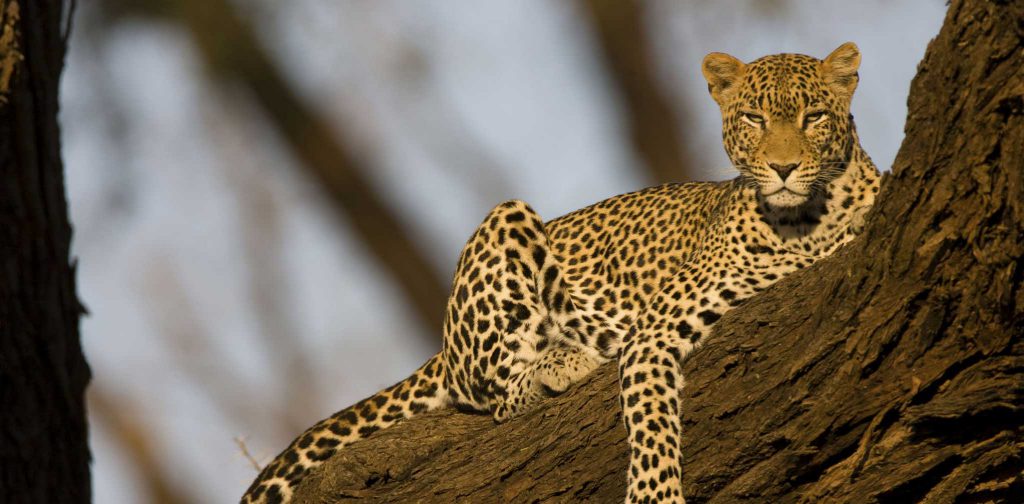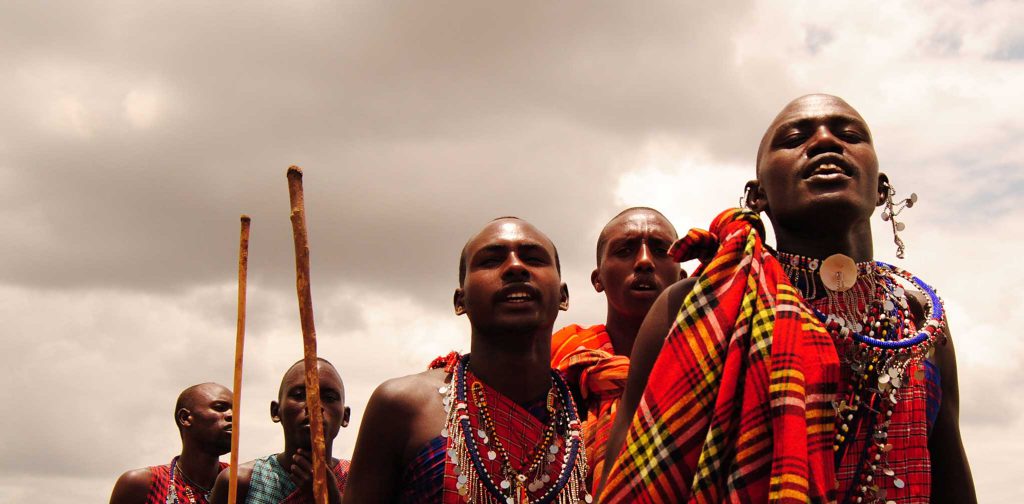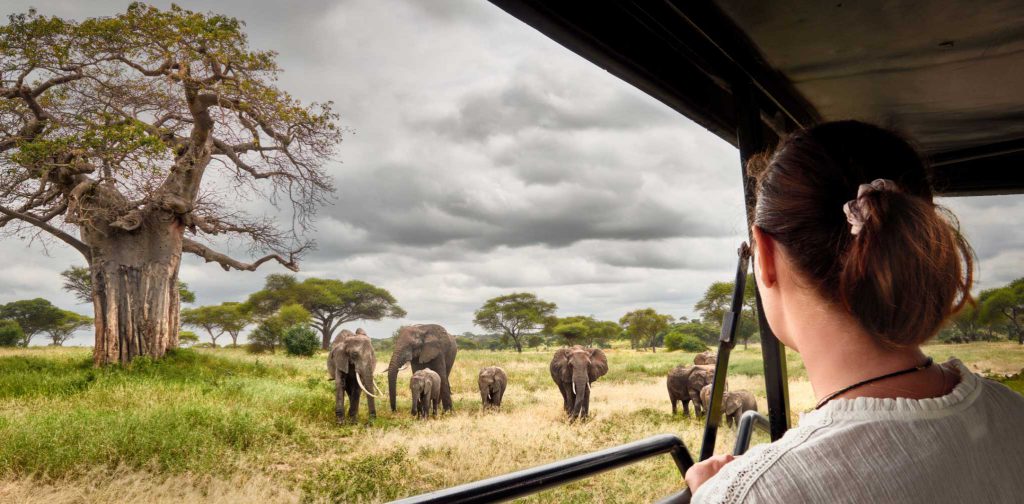From Lions to Laughter: Tips for Crafting the Perfect Tanzania Family Safari Vacation
I. Introduction
We understand that planning a safari in Tanzania with kids is a thrilling and extraordinary adventure that promises unforgettable experiences and precious family moments. The idea of venturing into the wilderness, surrounded by captivating landscapes and majestic wildlife, ignites a sense of excitement and wonder in both children and adults alike. Our family safaris in Tanzania will open a whole new world of exploration, education, and bonding opportunities.
Imagine your children’s eyes lighting up as they witness a herd of elephants gracefully crossing their path or spotting a playful lion cub frolicking in the grass. These are the moments that create lasting memories and instill a deep appreciation for the natural world. Tanzania, with its diverse ecosystems and abundant wildlife, offers an ideal setting for families seeking an immersive and educational safari experience.
Beyond the thrill of spotting iconic African animals, a family safari in Tanzania will provide unique educational opportunities for children. It allows them to learn about the intricacies of nature, understand the delicate balance of ecosystems, and gain a deeper understanding of the importance of conservation. Engaging with our experienced guides and local communities offers a chance to learn about the rich cultural heritage of Tanzania, broadening children’s perspectives and nurturing their curiosity.
What we can all agree on is a family safari should not just be an ordinary vacation; it’s a transformative journey that brings families closer together. The shared experiences, whether marveling at a sunrise over the Serengeti or huddling together in anticipation of a nocturnal wildlife encounter, create bonds that endure beyond the trip itself. It’s a time for parents to witness the wonder and awe in their children’s eyes, and for children to explore the world with wide-eyed enthusiasm.
In this blog, we will guide you through the essential tips and insights to help you plan a remarkable family safari to Tanzania. From choosing the best time to visit and selecting family-friendly accommodations to discovering age-appropriate activities and creating lifelong memories, we will provide you with all the information you need to embark on this thrilling adventure. Get ready to dive into the heart of Tanzania’s wilderness, where extraordinary moments and unforgettable memories await your family.
II. Why Tanzania is an Ideal Safari Destination for Families
Safari Spectacular: 5 Reasons Why Tanzania is a Dream Destination for Families
Tanzania stands as an unparalleled safari destination that caters to the unique needs and interests of families. From the abundant wildlife to the awe-inspiring landscapes, this East African gem offers a captivating and enriching experience for all ages. Let’s look at our top 5 reasons why Tanzania is an Ideal Safari Destination for Families:
remarkable wildlife: One of the standout features of Tanzania is its remarkable wildlife. The country is home to an astonishing array of animals, including the iconic African Big Five (lion, elephant, buffalo, leopard, and rhino). Imagine the excitement on your children’s faces as they witness a lion’s roar echoing across the savannah or watch a tower of giraffes gracefully munching leaves from towering acacia trees. Tanzania’s national parks and reserves, such as the renowned Serengeti and Ngorongoro Crater, provide abundant opportunities to observe these magnificent creatures up close in their natural habitats.
breathtaking landscapes: Apart from the wildlife, Tanzania boasts breathtaking landscapes that will leave your family in awe. The expansive Serengeti plains, with their golden grass and endless horizons, create a sense of vastness and freedom that is simply awe-inspiring. The Ngorongoro Crater, a UNESCO World Heritage Site, is a natural wonder that encapsulates stunning views and rich biodiversity within its ancient volcanic caldera. From the baobab-dotted Tarangire National Park to the lush greenery surrounding Lake Manyara, Tanzania’s landscapes provide a backdrop of unparalleled beauty for your family safari.
Accommodations: When it comes to accommodations and activities, Tanzania excels in providing family-friendly options. Many lodges and camps understand the unique needs of families and offer spacious accommodations that cater to the comfort of children and parents alike. From family suites with separate bedrooms to lodges with swimming pools and play areas, there are plenty of choices to ensure a comfortable and enjoyable stay.
Activities: Tanzania also offers a range of family-friendly activities that go beyond game drives. Guided nature walks allow children to explore the smaller wonders of the bush, learning about insects, plants, and tracks while developing a deeper connection with the natural world. Cultural interactions with local communities provide opportunities to discover traditional customs, dances, and crafts, fostering an appreciation for diverse cultures.
Safety: Safety is a top priority in Tanzania, and the infrastructure in place ensures a secure and worry-free experience for families. Reputable tour operators and lodges have stringent safety measures in place, including trained guides and protocols for wildlife encounters. In addition, the country’s well-established tourism industry and experienced guides ensure that families are in capable hands throughout their safari journey.
Tanzania’s combination of diverse wildlife, breathtaking landscapes, family-friendly accommodations, and safety measures make it an ideal destination for a family safari. Prepare to embark on an adventure that will captivate the imaginations of both young and old, creating treasured memories that will last a lifetime.
III. Safari Seasons: The Best Time to Visit Tanzania with Kids and why.
Timing is Everything: Discovering the Perfect Time to Take Your Kids to Tanzania”
Choosing the right time to visit Tanzania with kids is essential for maximizing your family’s safari experience. The different seasons in Tanzania offer unique wildlife sightings and varying weather conditions, each with its own advantages and considerations. Here is an overview of the seasons and what to expect when planning a safari with kids.
Dry Season (June to October):
• Wildlife Sightings: The dry season is a fantastic time for wildlife viewing as animals gather around water sources, offering excellent opportunities for children to witness thrilling predator-prey interactions.
• Weather: The weather is generally dry and sunny during this time, with comfortable temperatures. It’s important to pack warm clothing for early morning and evening game drives when temperatures can be cooler.
• Advantages: The dry season provides excellent game viewing opportunities, with animals often congregating in large numbers near rivers and watering holes. It’s an ideal time for families with older children who can handle longer game drives.
• Considerations: The dry season is also the peak tourist season, meaning popular parks can get crowded. It’s important to book accommodations and activities well in advance.
Green Season (November to May):
• Wildlife Sightings: The green season is characterized by lush vegetation, blooming flowers, and an abundance of birdlife. While wildlife can be more dispersed, it’s an excellent time for birdwatching and observing newborn animals.
• Weather: The green season experiences occasional rainfall, which contributes to the vibrant green landscapes. The temperatures are generally warm, but it’s advisable to pack rain gear and insect repellent.
• Advantages: The green season offers fewer crowds, lower accommodation rates, and a more tranquil atmosphere. It’s an excellent choice for families with younger children or those seeking a more budget-friendly safari.
• Considerations: Some roads in national parks may become muddy and impassable during heavy rains, limiting access to certain areas. However, this can be mitigated by selecting parks with better infrastructure during this season.
Regardless of the season you choose, it’s important to consult with your tour operator or travel agent to plan your itinerary according to your family’s preferences and interests. At Zilla Expeditions, we can provide valuable insights and recommendations based on current wildlife movements and park conditions.
In summary, both the dry season and the green season offer unique advantages and considerations when planning a family safari in Tanzania. Consider the ages of your children, desired wildlife sightings, weather preferences, and budget to determine the best time to embark on this extraordinary adventure. Whether it’s witnessing the Great Migration or exploring the vibrant landscapes, Tanzania will enchant your family with its natural wonders throughout the year.
IV. Choosing Family-Friendly National Parks and Reserves
Family Adventures Await: Handpicking the Most Kid-Friendly Parks and Reserves in Tanzania”
When planning a family safari in Tanzania, it’s important to select national parks and reserves that cater to the needs and interests of children. Here are some family-friendly parks that offer unique features and wildlife experiences, ensuring an unforgettable adventure for the whole family.
Serengeti National Park:
• Unique Features: Serengeti is renowned for its vast savannah plains and the annual Great Migration, where millions of wildebeest, zebras, and other herbivores migrate in search of fresh grazing lands. This spectacle of nature is a thrilling experience for kids and adults alike.
• Wildlife Experiences: Children will be amazed by the abundance of wildlife in Serengeti. From spotting lions, elephants, and giraffes to witnessing cheetahs in action or observing hippos in their natural habitats, the park offers a diverse range of wildlife encounters.
Ngorongoro Crater:
• Unique Features: The Ngorongoro Crater is a natural wonder, often referred to as the “eighth wonder of the world.” This UNESCO World Heritage Site provides a unique setting, as it is the largest intact volcanic caldera on Earth, harboring a breathtaking concentration of wildlife.
• Wildlife Experiences: Exploring the Ngorongoro Crater offers children the opportunity to witness a diverse range of animals, including elephants, rhinos, lions, and an abundance of bird species. The enclosed nature of the crater ensures close encounters with wildlife and allows for a focused and immersive safari experience.
Tarangire National Park:
• Unique Features: Tarangire is known for its iconic baobab trees, large herds of elephants, and the Tarangire River, which attracts a multitude of wildlife during the dry season. The park’s scenic landscapes and unique ecosystem offer a captivating experience for the whole family.
• Wildlife Experiences: Children will be thrilled to spot large herds of elephants, as Tarangire is famous for its elephant population. Other wildlife encounters include lions, zebras, giraffes, and a wide variety of bird species, providing endless opportunities for educational and exciting wildlife sightings.
Lake Manyara National Park:
• Unique Features: Lake Manyara is a diverse and compact park that offers a different perspective on a family safari. The park is known for its stunning scenery, including the alkaline lake, dense forests, and the famous tree-climbing lions.
• Wildlife Experiences: Children will enjoy observing tree-climbing lions lounging on branches, as well as encountering troops of baboons, giraffes, zebras, and a rich diversity of birdlife. Exploring the park’s varied habitats provides an engaging and educational experience for young nature enthusiasts.
These national parks and reserves are just a few examples of the family-friendly options available in Tanzania. Each park offers unique features, wildlife experiences, and educational opportunities that cater to the interests and attention spans of children. When planning your family safari, consider the time of year, accessibility, and the specific wildlife experiences you and your children are most excited about. Tanzania’s parks will undoubtedly leave your family in awe, fostering a deep appreciation for the natural world and creating memories to cherish for a lifetime.
V. Age-Appropriate Activities for Kids on Safari
Adventure Seekers: Exciting Safari Activities Perfectly Suited for Kids
A family safari to Tanzania is not just about game drives. There are a variety of age-appropriate activities that can engage children, foster their curiosity, and create memorable experiences in the wilderness. Here are some activities that will captivate young explorers and nurture their love for wildlife and nature.
Guided Game Drives:
• Game drives are a classic safari activity that allows children to observe wildlife up close. Knowledgeable guides will share interesting facts about the animals, their behaviors, and the surrounding ecosystem. Look out for child-friendly game drives that are shorter in duration and include frequent stops for breaks and snacks.
Nature Walks:
• Guided nature walks provide an immersive experience, allowing children to explore the smaller wonders of the bush. Accompanied by an experienced guide, children can discover the diverse flora and fauna, learn about animal tracks, identify different bird species, and gain a deeper understanding of the intricate balance of nature.
Birdwatching:
• Tanzania is a haven for birdwatchers, and children will enjoy spotting and identifying various bird species. Encourage them to keep a bird checklist and challenge them to find as many species as possible. Many parks and lodges have knowledgeable bird guides who can share fascinating information about the birds’ habits and habitats.
Cultural Interactions:
• Engaging with local communities offers children the opportunity to learn about different cultures and traditions. Take part in cultural interactions where children can witness traditional dances, participate in craft-making sessions, and gain insights into the local way of life. This exposure to diverse cultures broadens their perspectives and fosters an appreciation for cultural diversity.
Junior Ranger Programs:
• Some lodges and camps offer junior ranger programs specifically designed for children. These programs introduce kids to the wonders of the wilderness through educational activities, nature-based games, and conservation lessons. Children can learn about animal behavior, track wildlife, and even take part in mock anti-poaching activities, creating a sense of responsibility towards wildlife and conservation.
Campfire Stories and Stargazing:
• Gather around a campfire under the starry African sky and listen to captivating stories about wildlife and African folklore. Children can learn about constellations, hear ancient tales, and marvel at the beauty of the universe. This immersive experience allows children to appreciate the natural world from a different perspective.
Remember to consider the age and interests of your children when selecting these activities. Younger children may enjoy shorter game drives with frequent breaks and interactive elements, while older children may be ready for longer walks and more in-depth wildlife discussions. Tailoring the activities to their age and attention span ensures an engaging and enjoyable safari experience for the whole family.
THE BEST FAMILY SAFARI LODGES IN TANZANIA – TOP SAFARIS FOR KIDS & FAMILIES IN TANZANIA
https://www.epicroad.com/blog/the-best-family-safari-lodges-in-tanzania-top-safaris-for-ki.html
VII. choose Family-Friendly Accommodations and Services
Choosing the right accommodation is essential when planning a family safari in Tanzania. Fortunately, there are numerous lodges, camps, and resorts that cater specifically to families, providing comfortable accommodations and a range of amenities to enhance the safari experience for children. Here are some family-friendly options to consider:
Family-Friendly Lodges and Camps:
• Many lodges and camps in Tanzania offer family-friendly accommodations with spacious rooms or tents that can accommodate families of various sizes. These accommodations are designed to ensure the comfort of both parents and children, providing ample space and privacy.
Babysitting Services:
• Some lodges and camps provide professional babysitting services, allowing parents to enjoy game drives or other activities while knowing their children are in safe hands. Qualified staff members can engage children in age-appropriate activities, ensuring they have a memorable time even when not on safari.
Child-Friendly Menus:
• Family-friendly accommodations understand the importance of catering to children’s tastes and dietary requirements. They offer child-friendly menus with a variety of options to suit different palates. These menus often include familiar dishes alongside introducing local flavors and ingredients.
Swimming Pools and Playgrounds:
• Many lodges and camps feature swimming pools, providing a refreshing escape from the African heat. Children can splash and play while parents relax nearby. Additionally, some accommodations have designated playgrounds where kids can run, climb, and have fun in a safe environment.
Educational Activities:
• Family-friendly accommodations often organize educational activities specifically designed for children. These activities may include wildlife-themed arts and crafts sessions, interactive storytelling, or even short guided nature walks around the lodge grounds. Such activities engage children’s curiosity and deepen their understanding of the natural world.
Wildlife Viewing Opportunities:
• Some lodges and camps have wildlife viewing areas right on their premises, allowing children to observe animals from a safe distance. These designated areas may overlook waterholes or have specially constructed hides, providing children with memorable wildlife encounters without leaving the lodge.
Interconnecting Rooms or Family Suites:
• To accommodate larger families, some lodges offer interconnecting rooms or spacious family suites. This ensures that everyone has their own space while still being connected, allowing for a comfortable and convenient family experience.
When selecting accommodations, consider the needs and preferences of your family.
We understand the unique requirements of families and strive to make your safari to Tanzania as memorable and convenient as possible, allowing you to focus on creating lifelong memories with your loved ones in the heart of the African wilderness. Our team can assist you choose family-friendly lodges and camps in the areas you plan to visit, all you have to do is let us know your requirements and preferences when making an inquiry to ensure a seamless and enjoyable experience for the whole family.
From Lions to Laughter: Tips for Crafting the Perfect Tanzania Family Safari Vacation Read More »
